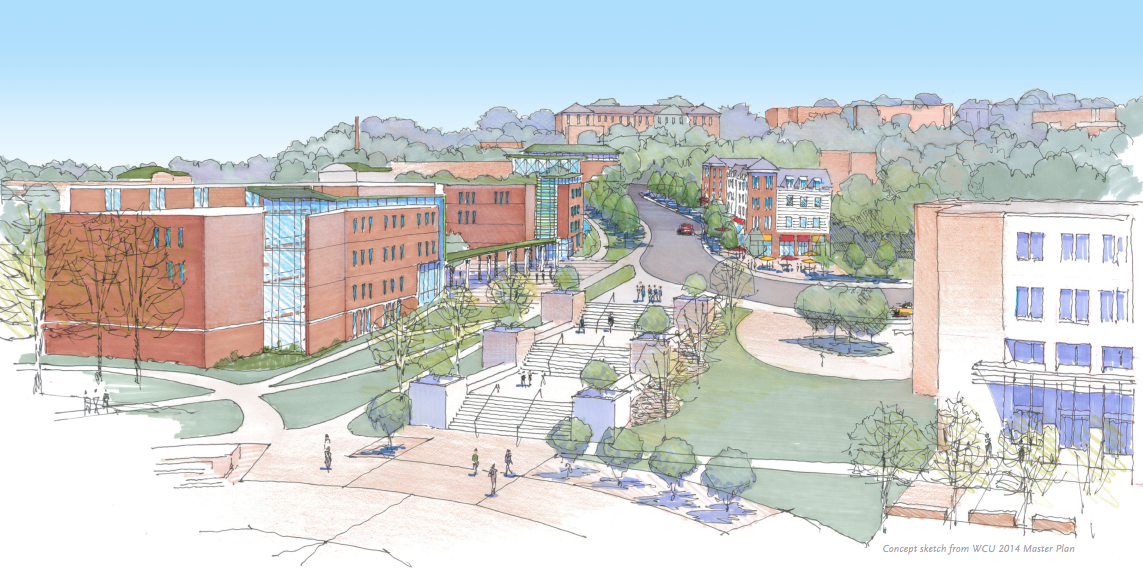Academic Committees
Mission
The mission of this committee structure is threefold:
-
To facilitate faculty, student, and staff engagement during the design and construction of our new science building.
-
To identify ways to use the new building to bring positive change to our cultures of teaching, research, and collaboration.
-
To identify ways the new facility can enhance our efforts to engagement with the larger campus and the region more broadly in science education, awareness, and understanding.
Each committee has specific tasks and, in some cases, committees will need to work together to complete their work.
The Steering Committee will serve as the primary link between the students, faculty, and staff in the building process. They will assist with communications, soliciting feedback, and decision making.
Key Questions:
- How do we facilitate faculty, staff, and student input into building design?
- How do we keep the University community informed about building progress?
- How do we maintain a high level of faculty and student input at all stages of the design process?
Key Tasks:
- Serve as the lead faculty liaison with Facilities Management, building designers, contractors, and other internal and external bodies who play a role in bu8ilding construction.
- Provide faculty feedback on designer selection and overall design.
- Communicate with faculty, students, and staff inside and outside the College about matters related to the Natural Science Building.
- Facilitate feedback from faculty, students, and staff during the design and construction process.
- Prioritize design and construction items based on feedback from faculty, students, and staff.
- Act as a resource for the other committees to facilitate their work.
The Pedagogy Committee will examine ways that the new science building can enhance pedagogy across the sciences and the College more broadly.
Key Questions:
- What types of pedagogy will provide our students with the best possible education in the sciences?
- What type of teaching principles can we develop that will shape our students’ experiences?
- How can the building design shape our pedagogy?
- How can we pilot new approaches while the building is under construction?
- How can we encourage pedagogical experimentation among our faculty?
- How can we measure success?
Key Tasks:
- Identify what we do well in terms of teaching and how we might enhance our teaching culture to improve student learning.
- Develop a list of pedagogical ideas to pilot during construction to beta-test instructional design.
- Develop, implement, and analyze assessment data to determine the effectiveness of new or refined approaches to student learning.
- Develop a report to share with colleagues across the College that captures lessons learned.
The Research and Collaboration Committee will develop ideas and plans to use the new science building to enhance formal and informal collaboration within the College of Arts and Sciences and across campus.
Key Questions:
- How can the building design enhance teaching collaboration across disciplines?
- How can the building design enhance research collaboration across disciplines?
- What spaces do we need to facilitate faculty and student research?
- What are the current barriers to teaching and research collaboration and how can we overcome them?
- What design principles can we employ to maximize the effective use of research spaces?
Key Tasks:
- Using faculty and student feedback, develop a set of principles to shape how we can better integrate collaboration in our teaching and research.
- Develop a plan that identifies deliberate and informal opportunities for collaboration and specific actions we can take over the next five years to implement it.
The Engagement Committee will explore ways that the new science building can enable campus and community engagement through research, public events, partnering with regional industry, and other activities.
Key Questions:
- How can the new facility enhance recruiting and retention for both undergraduates and graduate students?
- How can the new building become a showcase for our programs, our faculty, and our students?
- How can the new building forge a greater engagement with the sciences across the campus and across the region?
- How does regional engagement and our sense of place shape design?
Key Tasks:
- Develop a plan that allows us to use the new facility to attract and retain students.
- Provide formal input into the design process that emphasizes regional engagement and sense of place.
- Develop a plan to use the opportunities the new science building provides to enhance campus and community engagement over the next five years.

